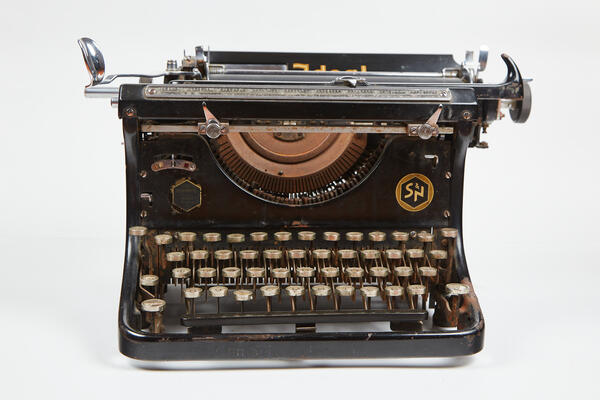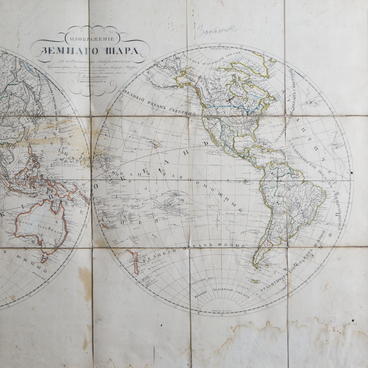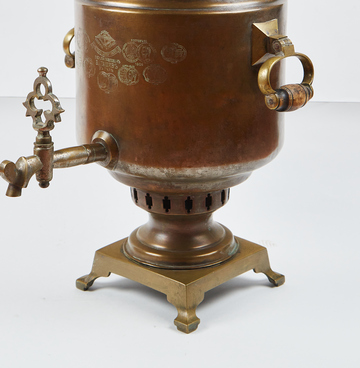The Rusanov House Museum presents a typewriter — a must-have in the home of an educated person.
The typewriter on display in the exhibition was produced by Seidel & Naumann. The company’s history began in 1868, when Bruno Naumann started the production of sewing machines in Dresden. In 1869, a major investor, Emil Seidel, put money into the development of the enterprise. Even though he left the founders’ council with a large allowance in 1876, the name of the company “Seidel & Naumann”, in which his surname comes first, was to remain in this form until 1949. The company specialized in the production of a wide range of goods: in addition to sewing machines, they produced bicycles, motorcycles, speedometers, arithmometers, grinding machines, musical instruments, and so on. In the early 20th century, the company started producing typewriters.
The first typewriter was produced at the Seidel & Naumann factory in 1900. It was developed by American designers Edwin Barney and Frank Tanner. The heavy typewriter — it weighed 17 kilograms — with beautiful cast-iron decorative elements on the sides received the ambitious name Ideal A. It was the first German typewriter with a “visible” font (when the user sees the printed text immediately while printing, and not after several lines, as in older devices). The typewriter had a distinctive feature — the location of the carriage return lever: in all machines it was mounted on the carriage, but in this one it was installed on the right between the keyboard and the printing unit. A total of four versions of Ideal A typewriters were released (1, 2, 3, 4), which had minor differences, mainly in design.
In 1902, the bilingual Ideal Polyglott typewriter
rolled off the Seidel & Naumann production line. It had the same 42 keys but
was capable of typing 126 characters (84 monolingual ones). In 1913, a new
model, the Ideal B, was introduced, a typical machine like the Underwood 5 or
Continental Standard with a four-row keyboard. Subsequently, until 1945, Seidel
& Naumann produced a whole series of classic typewriters.





